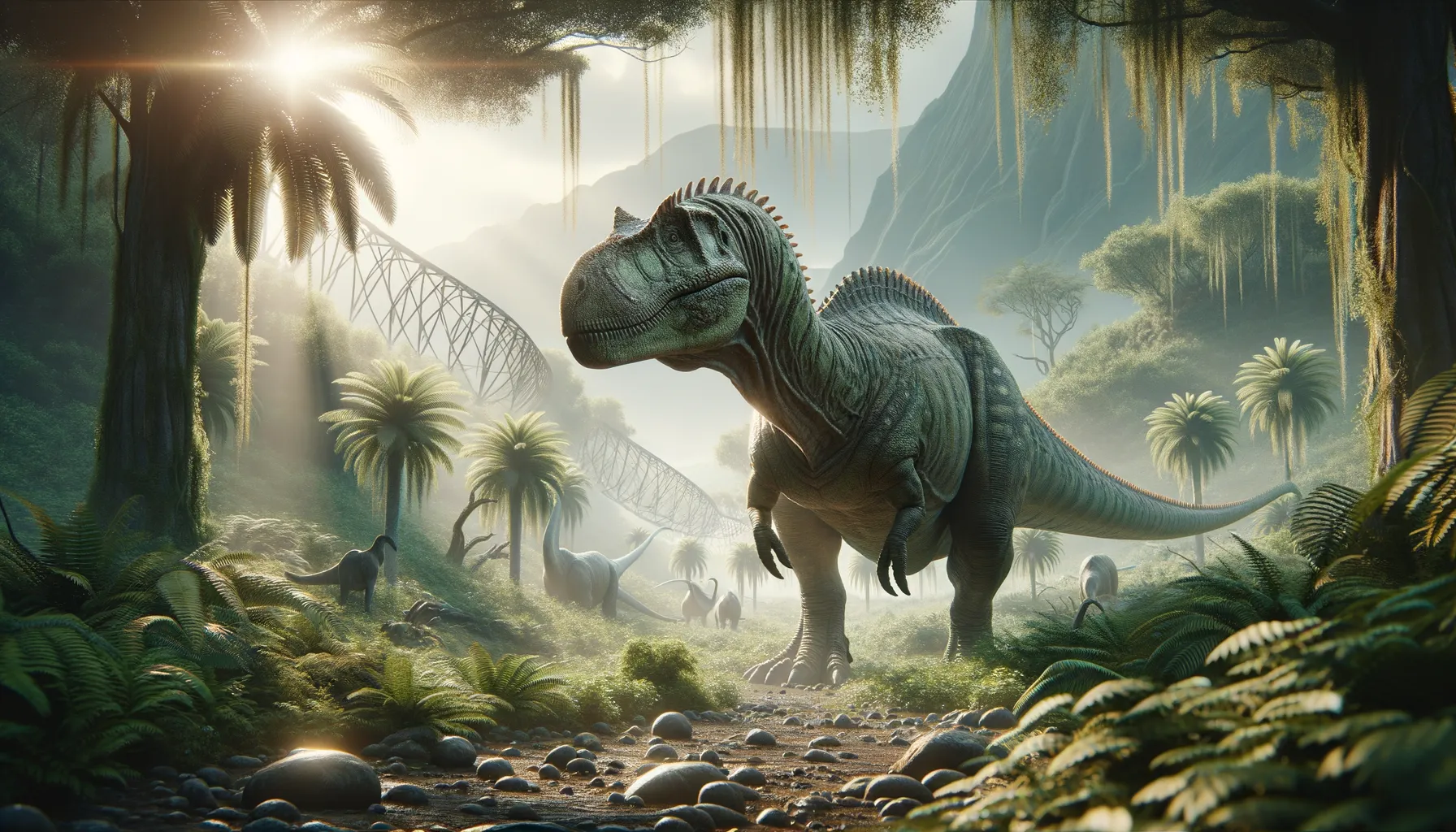
Palaeosauriscus
Gentle giants of the Jurassic landscape.
Period
Jurassic
Length
Roughly 25 feet long from head to tail.
Height
About 12 feet tall at the shoulders.
Weight
Approximately 2 to 3 tonnes.
Palaeosauriscus roamed the Earth during the Jurassic period, showcasing the hallmark features of large herbivorous dinosaurs. Known for its slow gait and substantial size, this dinosaur was a gentle giant in its lush, prehistoric environs. Despite its intimidating bulk, Palaeosauriscus was a peaceful plant-eater, playing a crucial role in maintaining the ecosystem balance of its time by aiding in the spread of plant life through its feeding habits.
Diet
Palaeosauriscus was strictly herbivorous, consuming a wide variety of lush vegetation available during the Jurassic. Its diet consisted mostly of ferns, cycads, and conifers, which provided sufficient nutrition for its massive body.
Hunting
Being an herbivore, Palaeosauriscus did not engage in hunting. Instead, it would forage peacefully through forests and plains, using its long neck to reach high foliage. Its large size and calm demeanor allowed it to feed without much threat.
Environmental challenges
Palaeosauriscus faced environmental challenges such as changing climate conditions and competition for food resources. The periodic climate shifts resulted in alterations to its preferred habitats, which could lead to food shortages. Additionally, competition with other herbivorous species sometimes led to more strenuous foraging and migration efforts in search of dense flora.
Speed
Relatively slow-moving due to its size.
Lifespan
Estimated to live for about 30-50 years.
First discovery
First discovered in the mid-20th century in Western Europe.
Fun Facts
- Palaeosauriscus was a small dinosaur, which likely makes them one of the less intimidating members of the dinosaur family.
- This dinosaur lived during the Late Triassic period, making it one of the early dinosaurs to roam the Earth.
- It is believed that Palaeosauriscus was a herbivore, meaning it probably fed on plants and leaves.
- Fossils of Palaeosauriscus have been found in Europe, which provides clues about the ancient landscape of the continent.
- The name 'Palaeosauriscus' combines Greek words that roughly translate to 'ancient lizard-like.'
- Palaeosauriscus is known mostly from fragmentary fossils, so there's still much to learn about this fascinating creature.
- Studying Palaeosauriscus helps scientists understand the evolution and diversity of early dinosaurs.
Growth and Development
Palaeosauriscus experienced a relatively slow growth rate, maturing over decades to reach its full size. Hatchlings were initially vulnerable to predators, relying on the security provided by their herd. Over time, as they grew stronger and larger, these dinosaurs became more robust and capable of fending for themselves.
Habitat
Palaeosauriscus thrived in tropical and subtropical regions characterized by abundant plant life. This included dense forests and open plains where they had easy access to a variety of vegetation. The rich diversity of their habitat supported a stable, nutritious diet essential for their large size and long lifespan.
Interaction with other species
Palaeosauriscus often interacted with other herbivorous dinosaurs as well as predators that roamed its environment. Occasionally, they would form mixed-species herds, which offered improved safety from carnivorous threats. While generally peaceful, these interactions were crucial in maintaining the ecological balance in their shared habitats.
Natural lifespan
They thrived for up to 50 years in their natural settings.
Reproduction
This dinosaur likely laid eggs, as is common with other sauropods. Nests were built in remote, protected areas to increase the chances of offspring survival. Once hatched, young Palaeosauriscus were nurtured by the herd, which provided protection and guidance as they grew.
Social behaviour
Palaeosauriscus was a social creature, often found in herds that offered protection and social interaction. This gregarious behavior was vital in the harsh prehistoric world, enabling communication and cooperation. Herd dynamics helped maintain group cohesion and facilitated mutual protection from predators.
Fossil locations
Fossils of Palaeosauriscus have been primarily discovered in regions of Western Europe. These locations have provided valuable insight into their living conditions and interactions with the ecosystem. The fossilized remains have been pivotal in reconstructing the behaviors and life patterns of this Jurassic giant.
